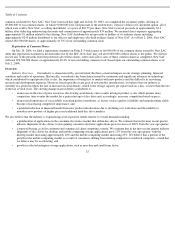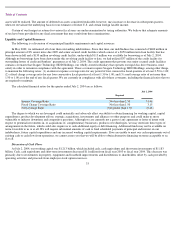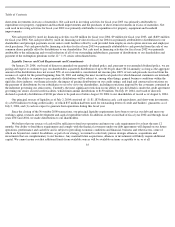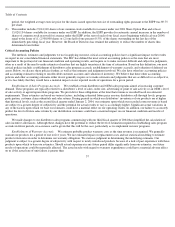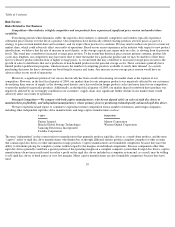Seagate 2003 Annual Report Download - page 32
Download and view the complete annual report
Please find page 32 of the 2003 Seagate annual report below. You can navigate through the pages in the report by either clicking on the pages listed below, or by using the keyword search tool below to find specific information within the annual report.
Table of Contents
Certain of Seagate Delaware’
s foreign and state tax returns remain under examination by various taxing authorities. The Internal Revenue
Service is currently examining our federal income tax returns for fiscal years ending in 2001 and 2002. The timing of the settlement of these
examinations is uncertain. We believe that adequate amounts of tax have been provided for any final assessment that may result.
Fiscal Year 2003 Compared to Fiscal Year 2002
Revenue. Revenue for fiscal year 2003 was $6.486 billion, up 7% from $6.087 billion in fiscal year 2002. The increase in revenue was
primarily due to improved unit sales volume that was substantially offset by price erosion and a shift in mix to our desktop storage products as
compared to our enterprise storage products. Our unit shipments increased from 55 million units in fiscal year 2002 to 68 million units in fiscal
year 2003. This increase in unit shipments was in both our desktop storage products and our enterprise storage products and was due to an
increase in the total available market, especially for desktop storage products, as well as our share of the total available market. Additionally,
we experienced strong growth in shipments to non-gaming consumer electronics applications.
Our overall average unit sales price for our rigid disc drive products was $93, $94, $97 and $97 for the first, second, third and fourth
quarters of fiscal year 2003, respectively. Average annual price erosion from fiscal year 2002 to fiscal year 2003 was approximately 14%. Price
erosion in the fourth quarter of fiscal year 2003 was the lowest we have experienced in eight years. Over the past few quarters, including
seasonally weak periods, our industry has demonstrated operational discipline in managing production and inventory levels.
During fiscal year 2003, we continued to maintain various sales programs aimed at increasing customer demand. We exercise a
considerable degree of judgment in formulating the underlying estimates related to distributor inventory levels, sales program participation and
customer claims submittals in determining the provision for such programs. During fiscal year 2003, the total provision for sales programs,
recorded as contra-revenue, was approximately 5% of our gross revenue, compared to 4% of our gross revenue for fiscal year 2002. The
increase in the provision for sales programs as a percentage of our gross revenue in fiscal year 2003 as compared to fiscal year 2002 was a
result of the increase in the portion of our revenue derived from sales to distributors.
Cost of Revenue. Cost of revenue for fiscal year 2003 was $4.759 billion, up 6% from $4.494 billion in fiscal year 2002. Gross margin
as a percentage of revenue for fiscal year 2003 was 27% as compared with 26% for fiscal year 2002. The increase in gross margin as a
percentage of revenue resulted from overall costs decreasing at a higher rate than price erosion and was primarily due to improved absorption
of fixed costs from increased unit sales volume. Ongoing cost savings as a result of our restructuring activities and our continued
implementation of operational efficiencies also benefited our gross margins. In addition, gross margins were enhanced by improved yields for
products introduced during the last half of fiscal year 2003 as well as a trend toward increased price stability.
Product Development Expense. Product development expense decreased by $28 million, or 4%, for fiscal year 2003 when compared
with fiscal year 2002. The decrease in product development expense from fiscal year 2002 was primarily due to the non-recurrence of deferred
compensation charges incurred in the fourth quarter of fiscal year 2002 and our sale of XIOtech in November 2002. These decreases were
partially offset by increased expense related to the opening of our new research facility in Pittsburgh, Pennsylvania, which included employee,
equipment and occupancy costs as well as several new product introductions and our development efforts in smaller than 3.5-inch form factor
rigid disc drives.
Marketing and Administrative Expense. Marketing and administrative expense decreased by $141 million, or 28%, for fiscal year 2003
when compared with fiscal year 2002. The decrease in marketing and administrative expense from fiscal year 2002 was primarily due to the
non-recurrence of deferred compensation charges of $112 million incurred in the fourth quarter of fiscal year 2002, and decreases of $48
million as a result of our sale
31






